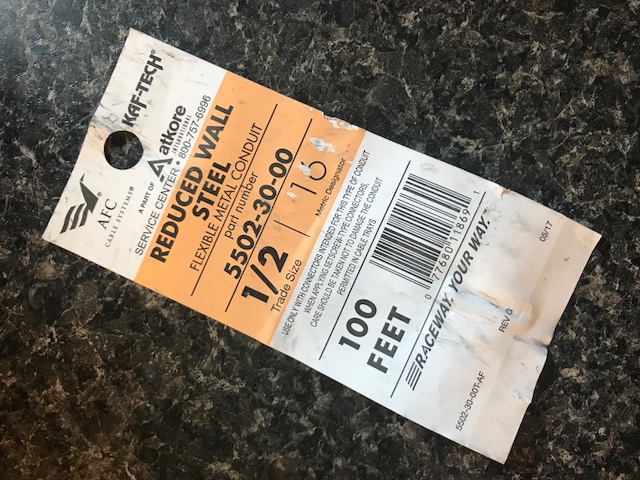On Thursday, the boss asked me and the other green helper to run four lines of conduit in one of the rooms we are working in. The start of three of the runs were basic 90 degree bends, simple enough.
After that we were stuck and the boss left us on our own. We could run the conduit up and over an HVAC duct and then down under the sprinkler system. Or we could go below the duct and go in between several copper water lines and the sprinkler system. Ether way was messy and well above our experience level. It was then that fear and apprehension started to creep in. This is what it should have looked like when we were done:

Until that point, I had only bent a couple of pipes and handed them to someone else to install. When I did install pipe it was with pipe bent by someone else with a layout planned by someone else.

This was different. We had to plan, bend, and install these conduit runs on our own. This was our first immersion; it was like drowning. We messed up many of the first bends either by measuring incorrectly or by doing poor bends. The conduit needs to be at perfect angles or it won’t fit together. It needs to be bent in straight lines or it won’t be level or it will look horrible once installed. We made pipes that looked awful once we got them up.
When we had finished three runs, the boss came back.
“Trace, how did I ask you to run these pipes?”
“Uh, like this?”
“No, I said to do [this this and this].”
“I must have misheard you.”
“You can leave it like this, but there was a better way to do it. Since you are committed to this way of running them, make sure you match the fourth run up with these three.” Then he left us alone again.
That was far from a confidence booster. We made the fourth run similar even though it came from a different part of the room. We had been in the same room doing this for seven hours, getting more and more frustrated with ourselves and each other. After we finished the fourth run and started cleaning up, the boss came back. He looked at our work cockeyed.
“Take this down and do it again. This can’t stay up like that. Too many bends, too close to the copper lines, looks awful. By code, how many degrees of bend can you have between boxes?”
“360 degrees.”
“Yep. And you have more than that. Like I said, take it down and start over.”
This was what it felt like to drown.







